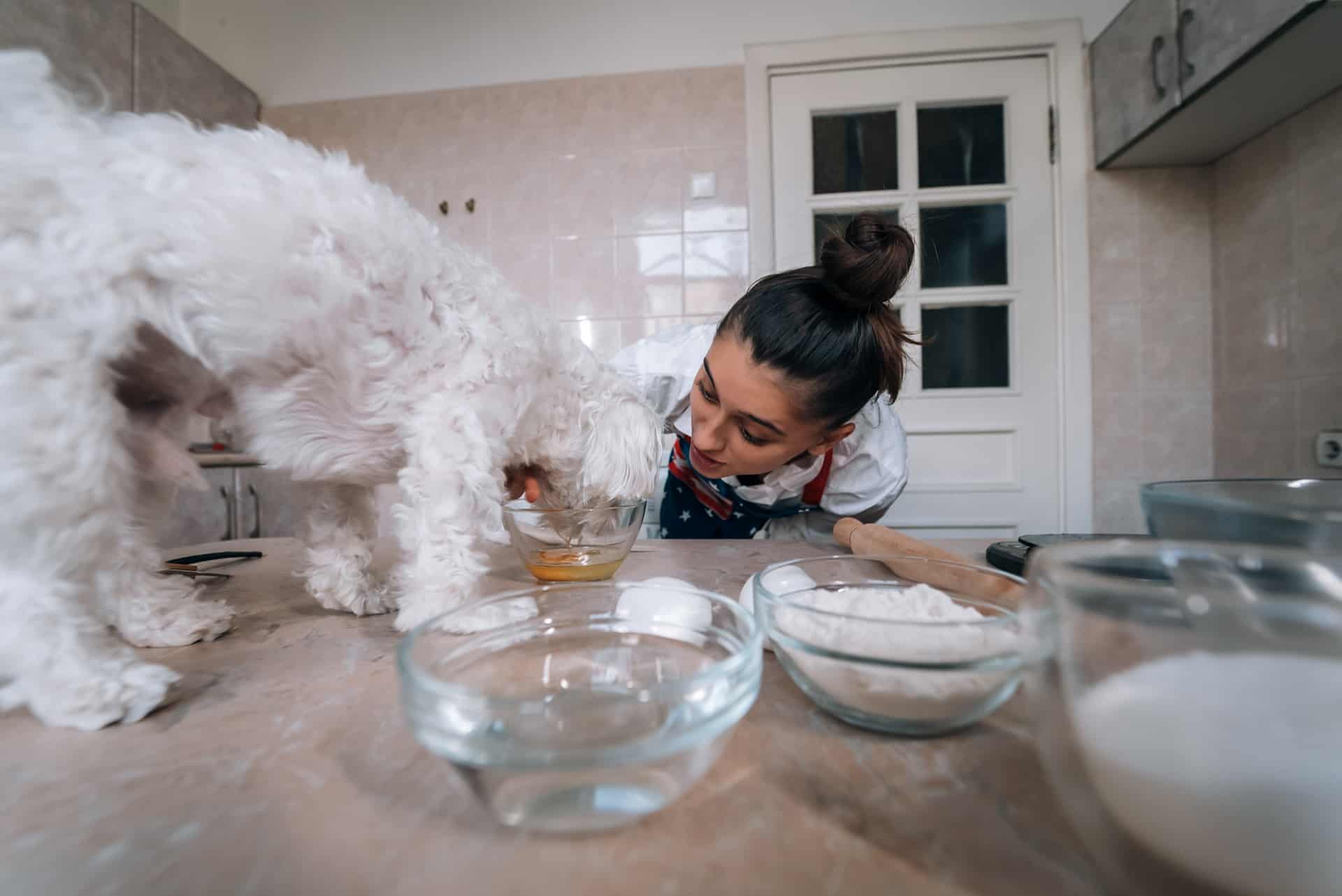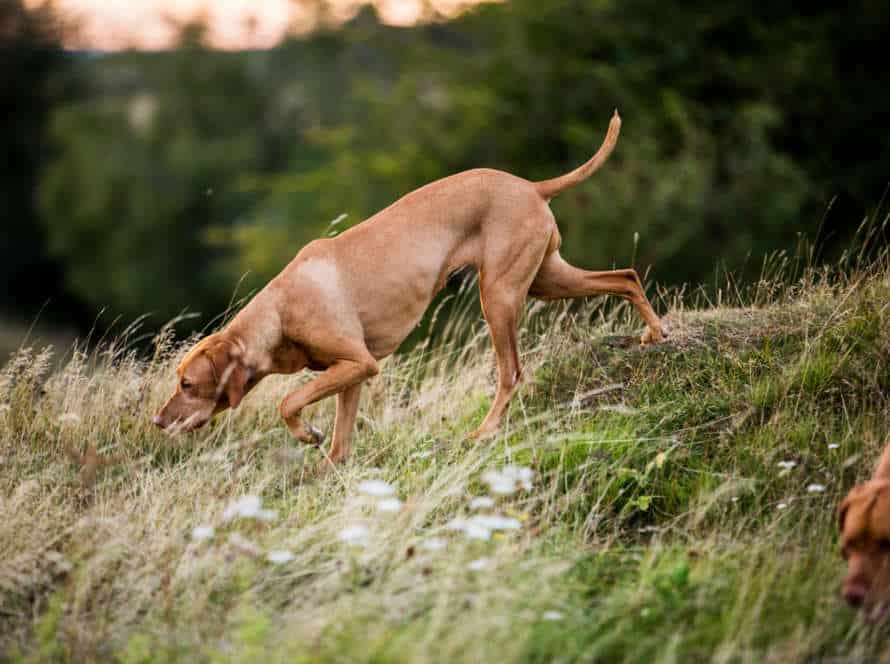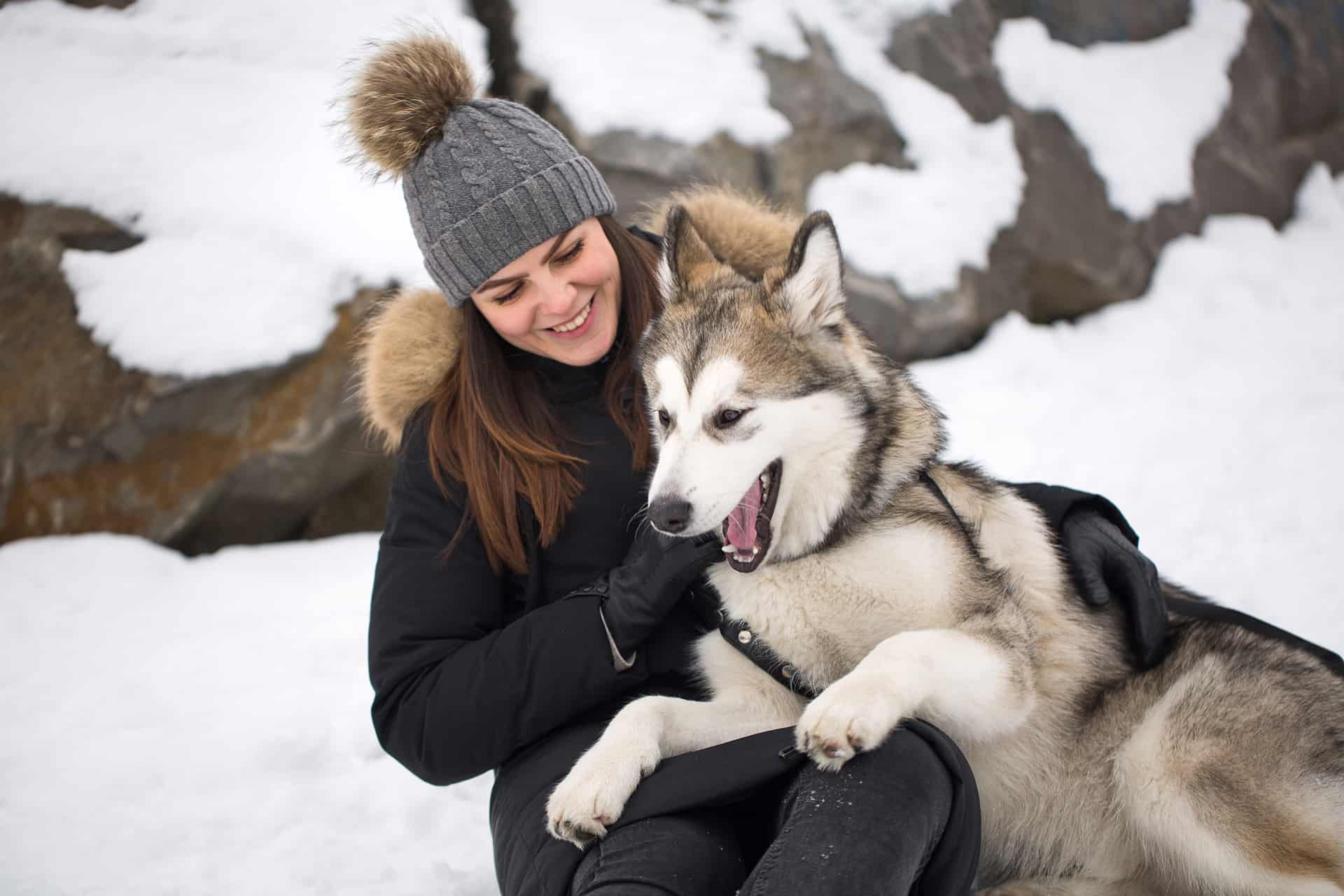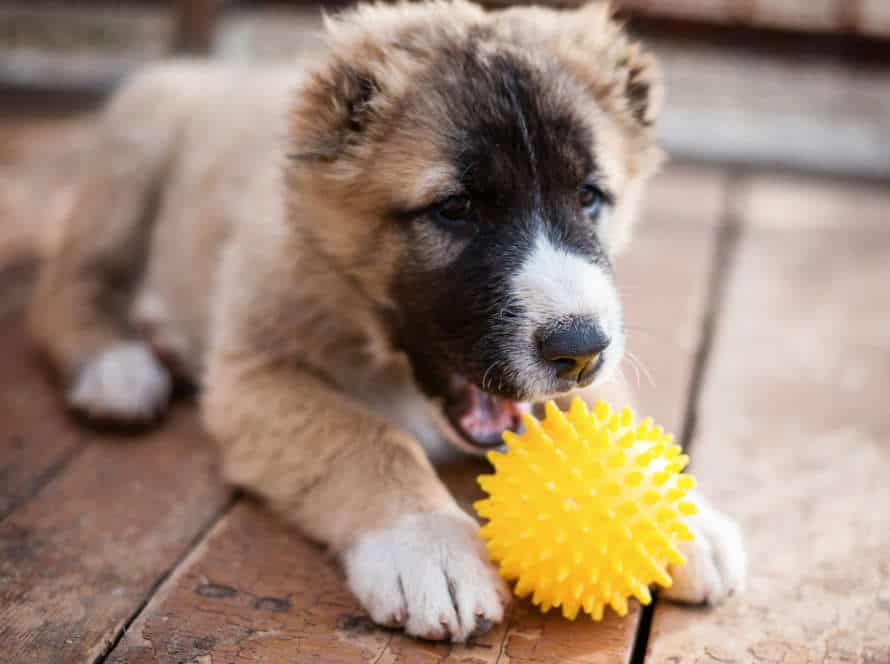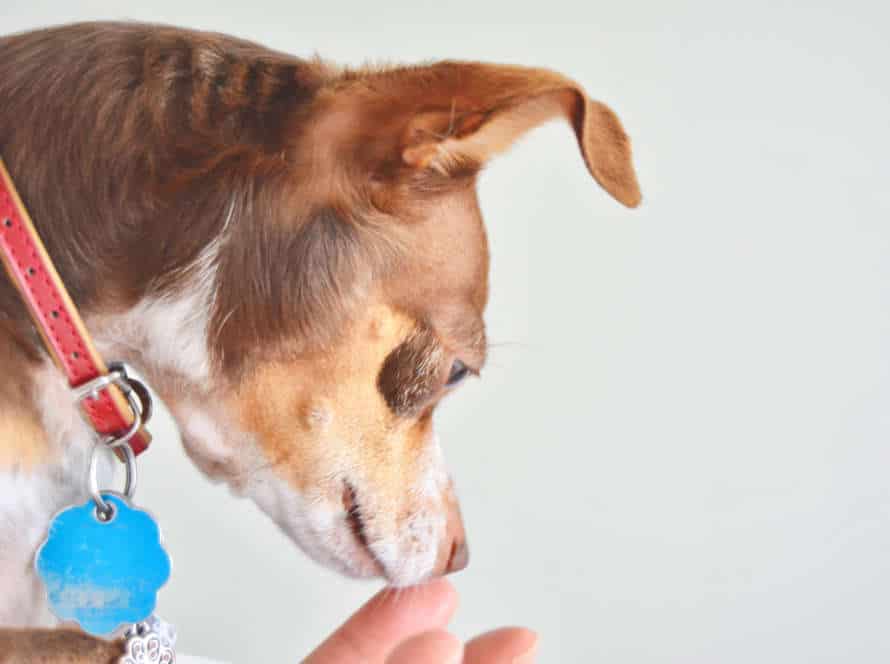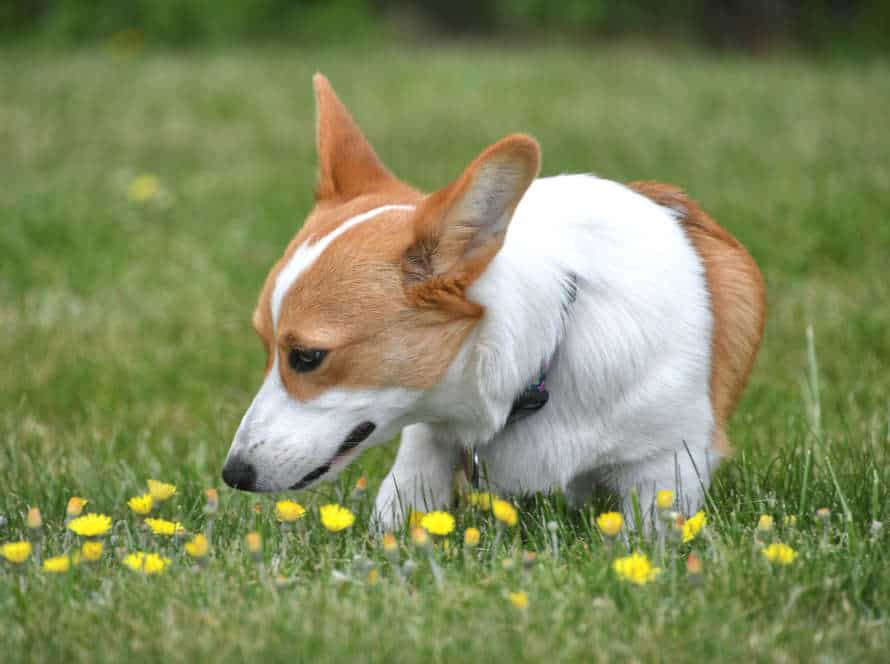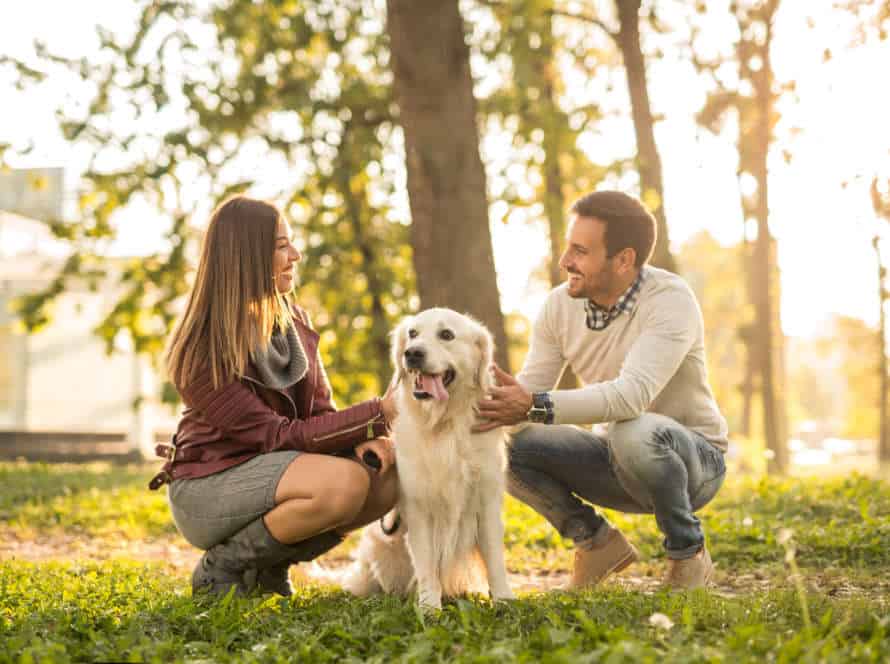The Art of Rewarding: Positive Reinforcement in Scent Games
The art of positive reinforcement in scent games is crucial for teaching your pup and making sure they have fun! Here are some tips to help you ace the craft:
- Supply high-value rewards – food and toys are typically loved by dogs, so offer them something they truly cherish.
- Switch it up – to keep them engaged and stop boredom, vary the rewards you give.
- Reward frequently – reward your pup each time they make progress, even if they haven’t reached the end goal yet. This builds confidence and reinforces the desired behavior.
By mastering the art of rewarding your pup during scent games, you’ll be able to teach them what you want quickly and with joy. Pro Tip: Positive reinforcement isn’t just about treats and toys; it’s also about verbal praise and physical affection. Don’t forget to give your pup verbal compliments and a pat on the head or tummy rub.
Understanding Positive Reinforcement
Positive reinforcement is an essential component of scent game training. It encourages and motivates the pup to search more effectively. In this article, we’ll learn the basics of positive reinforcement and why it’s so crucial when training your pup in scent games. We’ll also look into different ways to reward them – to keep them motivated.
What is Positive Reinforcement?
Positive reinforcement is a technique to condition behavior. It rewards desirable actions with incentives or rewards. This makes it more likely for the same behavior to be repeated. It can be used in many areas, e.g. training animals, parenting and in the workplace.
A popular example is scent games for dogs. In these games, a treat or toy is hidden and the dog must use their sense of smell to find it. Once they do, they are rewarded with praise, affection or a treat. This lets the dog associate their sense of smell with positive outcomes and encourages them to do it again. Positive reinforcement is a powerful tool to encourage good behavior.
The Power of Positive Reinforcement in Dog Training
Positive reinforcement is a great tool for dog training! It involves rewarding good behavior. Here’s how it works for scent games:
- Start with teaching your pup a command, like “find it” or “search.”
- Hide a treat or toy in an easy-to-reach spot.
- Let them search for the hidden item and praise them when they find it.
- As they get better, make the hiding spots harder and give less guidance.
- Don’t forget – positive reinforcement rewards good behavior, not bad! Focusing on the good will motivate your pup to learn quickly and strengthen your bond.
How Positive Reinforcement Affects a Dog’s Brain
Positive reinforcement can be a powerful tool when training dogs. It has an effect on their brains. When using positive reinforcement, rewards are given for good behavior. This triggers the release of feel-good chemicals, such as dopamine. Over time, this repeated release creates a positive association between good behavior and rewards. It motivates the dog to repeat this behavior. This training method is not only effective but also humane. Plus, it strengthens the bond between dog and owner.
Scent games are a fun and effective way to train your dog’s nose. It can be done from home. All that’s needed is scent, a dog, and treats.
Pro Tip: Timing and quality of rewards is key. The reward should come immediately after the desired behavior. It should be something that your dog finds genuinely rewarding.
Rewarding Techniques for Scent Games
Positive reinforcement is key for teaching and learning with scent games. This article looks at methods to reward a pup when they locate a scent. We’ll discuss different techniques to offer incentive after sniffing out the smell. Let’s get into it! Pros and cons of each option? You bet!
Using Treats as Positive Reinforcement
Treats make great positive reinforcements in scent games. To use them properly, remember these tips:
- Choose tasty treats your pup loves. The yummier the better – they’ll be more motivated to do their best.
- Keep the treats small. That way you won’t overfeed them, and they’ll keep wanting more.
- When your pup does something right, give them a surprise treat. That could be when they complete a task, behave well, or meet the goal.
- Mix up when you give the treats. This will keep them guessing, so they’ll be more eager, even when facing something new.
- As time goes on, give fewer treats and more verbal praise.
Incorporating Toys as a Reward
Using toys for rewards is a great way to motivate your pup during scent games. Here’s how:
- Pick a toy your pup loves.
- Link the toy to a scent game your pup enjoys.
- Reward your pup with treats, praise, or attention when they complete tasks or sniff out the correct scent.
- Give the toy as a bonus when your pup does exceptionally well or reaches a milestone in training.
- Store the toy away from your pup when they need to rest.
Incorporating toys as a reward will make scent games more fun and exciting for your pup. Pro tip: Use different toys to keep your pup engaged.
The Power of Verbal Praise
Verbal praise is a great help when teaching your pooch scent games! Combine it with rewards and you can encourage good behaviour and improve their performance.
Here are some useful compliments to use:
- “Good job!” – When the pup finds the target scent or does something right.
- “Yes!” – Mark the correct behaviour and let them know a reward is coming.
- “Bravo!” – Add enthusiasm and excitement to the praise, boosting their motivation.
Always use a cheerful and excited voice when praising and give them a physical treat or toy as well. This will help them learn and succeed in scent games!
Scent Game Training Processes
Train your dog with scent games! It’s a great way to reward them for good behavior. Positive reinforcement is key. Understand how it works, and you’ll be able to use scent games as a teaching tool. This will help your pup learn faster!
Introduction to Scent Games
Scent games are great for training your pup! It activates their natural desire to smell and find things. Plus, they get mental and physical exercise too. Positive reinforcement is very important in scent game training. So, here are some new ways to start:
- Simple Search – Hide treats in easy spots and encourage your dog to find them. Give rewards right away when they do.
- Treasure Hunt – Hide several treats in different spots. Make it harder as they go.
- Scent Tracking – Hide a strong-smelling item like a toy or treat. Encourage them to use their nose and track the scent. Increase the distance and complexity of the scent trail.
Always use positive reinforcement and reward your dog, even if they don’t find the item. This will keep them enthusiastic for future scent games.
Preparing for Scent Game Training with Positive Reinforcement
To get ready for scent game training with positive reinforcement, you need to plan out a process. This will make sure your pup is successful and enjoys playing these games. Positive reinforcement is an excellent way to teach desired behaviors. It rewards the good stuff, making it more likely to be repeated.
So, here’s what to do:
- First, teach basic commands like “sit” and “stay”. This will show your pup that you’re the boss and make them more confident.
- Second, pick a scent your pup likes and is motivated by.
- Third, show the scent to your pup and let them know there’s a reward when they find it – like treats or toys.
- Fourth, start off easy by hiding the scent in an easy-to-find spot. Then, you can make it more challenging.
- Fifth, reward your pup when they find the scent. Praise them, give them a treat, or use verbal praise.
Consistency and patience are vital for success in scent game training with positive reinforcement. Make sure it’s fun for both you and your pup!
Implementing Positive Reinforcement in Scent Game Training
Positive reinforcement is key when training your pup in scent games. Here’s how:
- Identify what your pup loves! This can be treats, toys, or praise.
- Connect this reward to the scent. Give them their favorite treat, toy, or praise when they find the scent.
- Make it harder gradually. As they get better, up the challenge. Give rewards to show you approve of their behavior.
Positive reinforcement makes training easier and strengthens your bond with your pup. Rewards during scent game training not only improve their sense of smell, but also make for a long-lasting and healthy relationship.
Troubleshooting with Positive Reinforcement
Positive reinforcement is key when training animals. It motivates them to do right, and it helps both the animal and the handler. But, it may not always be the answer. Let’s explore why, plus strategies to make positive reinforcement work with scent games.
Potential Obstacles in Scent Game Training
Scent game training is fun and engaging for dogs. It gives mental stimulation and improves scent detection. But like any training, obstacles can hinder progress. Here are the most common obstacles and how to fix with positive reinforcement:
- No interest? Increase reward value with higher value treats or toys.
- Difficulty identifying scent? Start with a more obvious scent or use a stronger concentration.
- Distractions? Gradually increase level of distraction and reward dog when they find target scent in challenging environment.
Troubleshoot these obstacles with positive reinforcement-based techniques for effective and enjoyable scent game training for you and your furry friend.
Using Positive Reinforcement to Address Common Training Challenges
Positive reinforcement is a great way to tackle training issues with your furry pal. Here’s how it can help with scent games:
- Reward your pet when they indicate the correct scent with treats, toys, or praise. This will motivate them to keep searching for the right scent.
- If your pet is misbehaving or feeling stressed, handle the situation calmly and positively. Instead of scolding them for sniffing the wrong scent, guide them to the right one and reward them when they get it right.
Pro tip: Keep your training sessions short and enjoyable. Give lots of praise and rewards to show your pet that the desired behaviour is good, and form a positive bond between you and your pet.
Avoiding Common Mistakes in Positive Reinforcement Training Techniques
Positive reinforcement training is a great way to teach dogs new behaviors or reinforce old ones. But, to get the results you want, it’s important to avoid mistakes. Here are some to keep in mind:
- Inconsistency: Rewarding and enforcing rules inconsistently can confuse dogs and slow down their learning.
- Using punishment: Positive reinforcement is meant to reward good behavior and create positive connections. Punishment like hitting or shouting will undermine the trust between you and your dog.
- Timing: When rewarding your dog, it’s important to get the timing right. Too late or too soon can be ineffective.
- Low-value rewards: Using rewards that aren’t appealing to your dog can reduce motivation and make training harder.
- Distractions: Training in distracting environments can be bad for learning.
- Lack of patience: Positive reinforcement requires time, patience, and consistency to work. Even if progress is slow, be patient.
Pro Tip: Consistency, patience, high-value rewards, and timing rewards correctly are all key to success with positive reinforcement. Avoiding mistakes will help you have a great relationship with your pup and successful learning.
Frequently Asked Questions
1. What is positive reinforcement in scent games?
Positive reinforcement involves rewarding a dog for exhibiting desired behavior while playing scent games. This encourages the dog to continue performing the desired behavior and improves their skills.
2. How do I choose a reward for scent games?
You can choose a reward that your dog likes, such as food or toys. It’s important to make sure the reward is appropriate for the game and does not distract the dog from the scent.
3. How often should I reward my dog during scent games?
You should reward your dog frequently, especially during early training. As your dog becomes more skilled, you can gradually reduce the frequency of rewards.
4. How do I train my dog to recognize scents?
You can start by introducing your dog to a scent and rewarding them for alerting you when they detect it. As your dog becomes more skilled, you can increase the difficulty by adding more scents or hiding them in more challenging locations.
5. What are some benefits of scent games?
Scent games can improve the bond between you and your dog, provide mental stimulation and exercise, and help develop your dog’s natural scent-detection abilities.
6. Can scent games be played indoors?
Yes, scent games can be played indoors using a variety of scents and hiding spots. Just make sure to choose a safe and appropriate location for the game.

